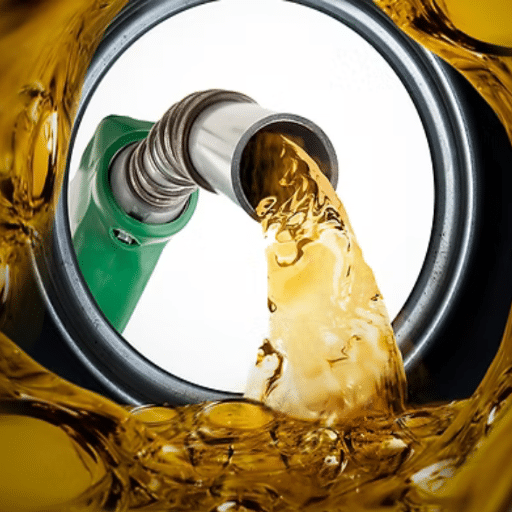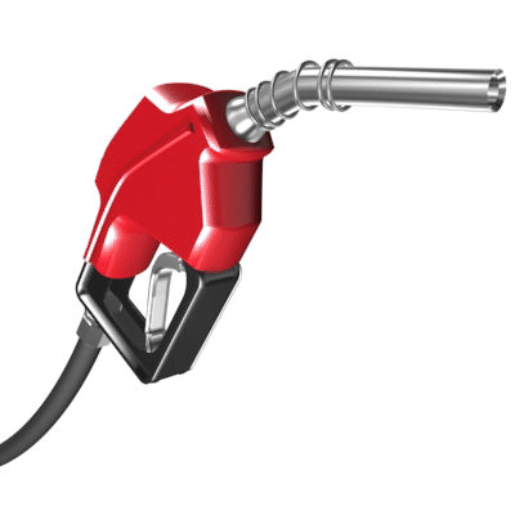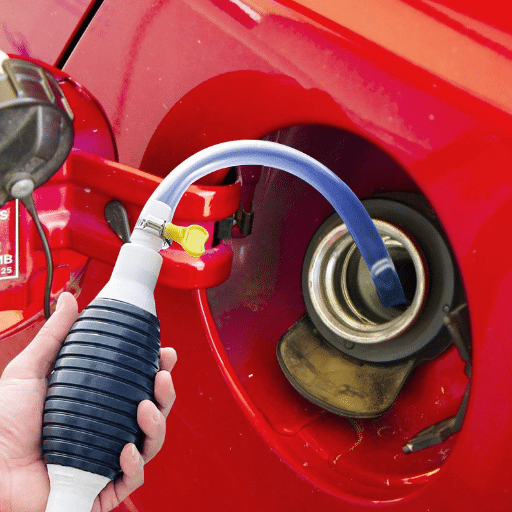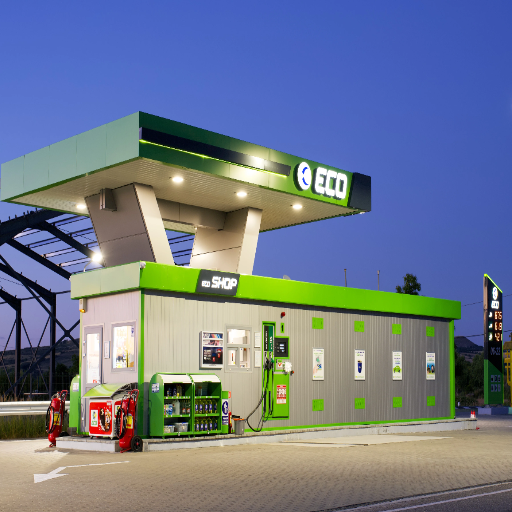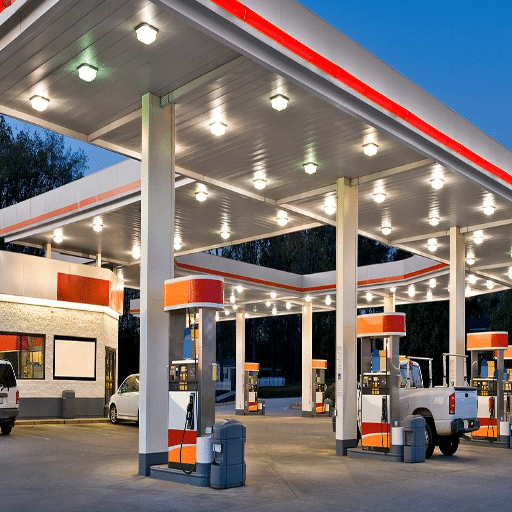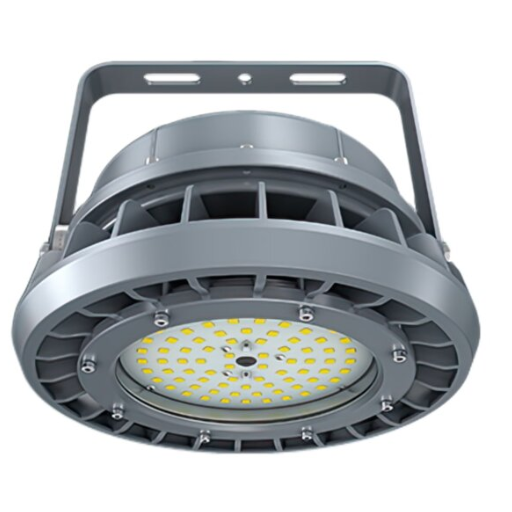A rotary rig is one of the most important inventions of modern drilling technology for the efficient extraction of resources from beneath the surface of the Earth. This guide aims to dismantle all components, systems, and processes to explain how rotary rigs find such versatility and usefulness in varied industrial applications. Beginning with the mechanical systems that power the drilling operation itself and continuing on through the fluid and control systems to ensure accuracy and safety of the operation, here lies a roadmap for the professional and the enthusiast. Whether you are fresh in the business or intend to become more technically proficient, this article will help you grasp a lucid idea of how rotary rigs operate and how vital they are for energy exploration and similar projects.
Introduction to Rotary Drilling Rigs
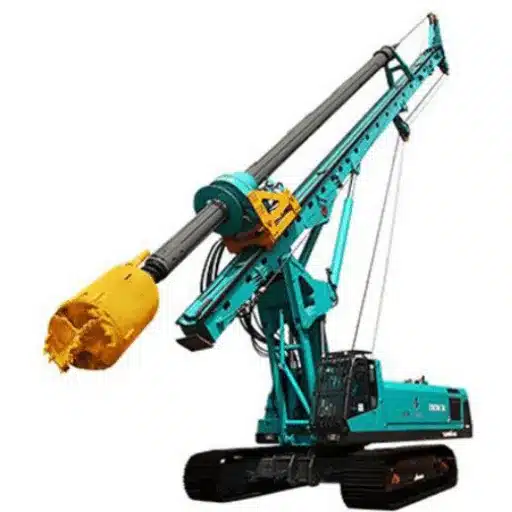
An important type of rig used in drilling operations revolves around the rotary method-mainly for geological exploration and extraction of natural resources like oil, gas, or geothermal energy. As the drilling process proceeds below the surface, the rig drills through the layers of rock or soil with the drill bit rotating. It allows for quick drilling while stabilizing and operating accurately simultaneously. The major components of this system are the derrick, drill string, drill bit, and circulation system, which cooperate to penetrate into the earth and remove cuttings from the wellbore. It has become one of the favorite procedures for deeper drilling with higher speed and precision in energy exploration.
What is a Rotary Rig?
One of a rotary rig’s utterly prime structural assemblies: the derrick is the big tower holding the drill string and mighty loads during each function. Its presence is to ensure safety and stability, as well as the capability to operate the drill string. The drill string is an assembly of interconnected pipes conveying rotary motion along with drilling fluids to the drill bit. The drill bit is attached to the bottom of the drill string, doing the actual cutting of the rock formation by means of rotation and force application.
Next is a circulation system that is essential for the rigorous working of the rotary rig: the system keeps the drilling fluid, general mud, flowing down through the drill string and back upward to the surface. This fluid was cooling the drill bit, keeping up correct pressure, and removing the rock cuttings from the wellbore. Modern rigs are designed to use high-tech mud pumps and solids control systems to utilize efficient circulation.
The advanced rigs now integrate automation technologies comprising the top drive and electronic monitoring systems to provide safety and efficiency; these technological innovations cut down on downtime and also contribute to the increased precision of the operation at a reduced cost, cementing the importance of rotary rigs in the global drilling industry.
Importance of Rotary Drill Systems
Rotary drilling systems are of vital importance to modern energy and resource extraction. Until recently, the injection of fluids into deep subsurface reservoirs was beyond the reach of man. They have the untarnished glory of anarching deep excavation under high pressure. With operative techniques today, hydrocarbons in Ultra Deepwater are harvested below 35,000 feet (roughly equivalent to 10,668 meters), thus showcasing the reach and durability of rotary drill systems.
Materials science advancements have greatly contributed to the durability and efficiency of rotary drill components. For instance, the automobile industries mainly utilize polycrystalline diamond compact (PDC) drill bits, which are extremely hard, resist wear for longer times, and can reduce downtime. Also, since the installation of real-time data monitoring systems, it has been possible to track the progress of the drill extremely accurately while optimizing penetration rates to avoid risks such as wellbore instability or equipment failure.
Additionally, the rotary drill system is very much a demand in geothermal energy projects, which require precise drilling in accessing heat stored deep within the Earth’s crust. The global geothermal drilling market alone is forecast to record a compound annual growth rate (CAGR) of above 5% from 2023 to 2028, an increase that corresponds with increasing investments in renewable energy infrastructures, showing the ability of rotary systems to efficiently support both conventional and sustainable energy programs.
The immensity of rotary drill systems in shaping the economy and environment cannot be overemphasized. Advanced mud circulation systems maximize resource recovery while minimizing environmental contamination. On the flip side, automation and remote operations reduce human error and overhead costs, hence creating a safer work environment where rotary drill systems could well be regarded as a single cornerstone in the dawn of modern extraction industries.
Overview of Rotary Drilling Processes
Rotary drilling is a vital process that is employed in the exploration and extraction of subsurface materials like oil, gas, and minerals. As the name suggests, a drill bit rotates, thereby mechanically penetrating various geological formations to target resource deposits. The basic components of a rotary drilling system are the drill bit, the drill string, the mud circulation system, and the derrick, working in coordination to achieve maximum efficiency and precision.
The drilling process initiates as the drill bit is turned by motors or a turntable to grind and cut through rock layers. Meanwhile, the drilling fluid or “mud” is simultaneously circulated via the drill string down to the bit and back to the surface. This drilling fluid cools and lubricates the bit, transports the rock cuttings back to the surface, and stabilizes the wellbore by applying hydrostatic pressure. Sophisticated monitoring systems analyze the drilling fluid for hydrocarbon traces to pinpoint potential resource-bearing formations.
With advanced technology developments in rotary drilling, particularly in directional drilling, operators can now steer the drill bit precisely towards objectives that are not directly under the rig, thereby increasing resource extraction efficiency and dynamics. Besides, automation and high-speed data telemetry provide great value in the real-time monitoring and adjustment of a drilling operation to enhance the safety aspects, reduce downtimes, and operational costs. All these innovative technologies keep rotary drilling very versatile and efficient in the energy and resource industry.
Key Components of a Rotary Drill Rig
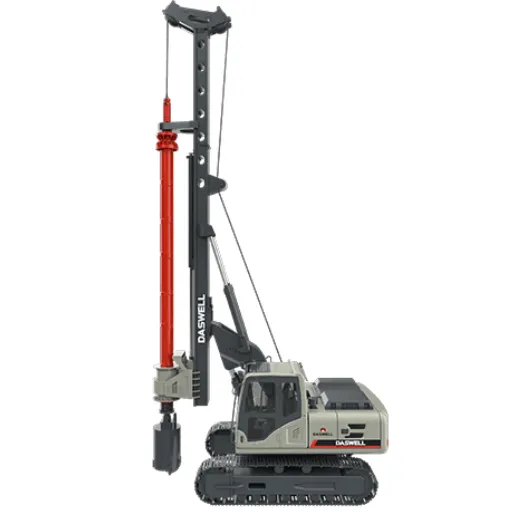
A drill bit is the cutting tool to penetrate the earth and is normally used to break, grind, or crush through various rock formations.
This assembly extends the drill bit to the surface. It includes the drill pipe and other components that transmit rotation and drilling fluid.
The Kelly and top drive are mechanisms for imparting rotation to the drill string and bit. The latter is used more in modern rigs due to its greater efficiency.
Traditional rigs have rotary tables that turn the drill string using mechanical means.
Nestled around the drill bit, drilling fluid (or “mud”) is circulated to provide cooling, carry cuttings from the borehole, and stabilize the wellbore.
This system comprises the derrick, drawworks, and cables, which are used to raise or lower the drill string and other heavy equipment.
The BOP is a main safety device intended to prevent any uncontrolled release of fluids or gas whilst drilling.
These components ensure drilling is carried out safely, efficiently, and with precision in conditions according to the geological types.
Drill Bit and Its Functionality
A drill bit remains an integral piece in the drilling process that cuts through the rock formation to establish a wellbore. Drill bits are classified according to design and functionality, with the drilling process relying mostly on roller cone bits, fixed cutter bits such as PDC bits, and hybrid bits that have features of both.
Types of Drill Bits
Roller Cone Bit
The rotating cone of a roller cone bit crushes and grinds the rock. They are commonly used for softer formations and come with different insert materials, including tungsten carbide, to maximize durability. Other than that, the bits can work in diversified formations with caution put into monitoring to avoid wear and damage.
Fixed Cutter (PDC) Bit
A Fixed Cutter (PDC) Bit has synthetic diamond surfaces of extreme hardness bonded to a carbide substrate for durability. These bits are suitable for harder formations with faster rates of penetration (ROP), given the continuous shearing action on the formation. The introduction of PDC bits has been associated with greater operational efficiency in unconventional drilling setups.
Hybrid Bits
To their cutting action of roller cone bits and PDC bits, hybrid bits add a component for adaptability in formations of mixed hardness. These bits find greatest advantage in formations where otherwise a change in a bit would be warranted.
Bit life, rate of penetration, and formation compatibility stand as the measures of performance for drill bits. The advent of smart drill bits embedded with sensors stimulated recent innovations in bits; hence, bits now collect real-time data during drilling. Consequently, the operators could track such parameters as torque, temperature, and wear levels and use this information for predictive maintenance, thus cutting down on non-productive time.
In oil and gas exploration, nothing is more important to operational efficiency, cost reduction, and safety than selecting the right drill bit for the job. Considerations for bit selection are formation, well depth, and objectives of operation, with the constant evolution of materials sciences and design engineering further driving performance.
Top Drive vs. Kelly Drive Systems
| Feature | Top Drive Systems | Kelly Drive Systems |
|---|---|---|
| Drilling Efficiency | Provide more efficient drilling operations by rotating the drill string continuously while adding pipe, thus minimizing connection time and reducing incidents of stuck pipe | Traditional style that requires stopping rotation during pipe connections, leading to longer connection times |
| Installation | Installed on the mast or derrick for better control of torque | Operates from the rig floor using a square or hexagonal Kelly passing through the rotary table |
| Automation | Can be automated or operated remotely, adding safety factor, particularly in HPHT environments | Manual operation with limited automation capabilities |
| Well Types | Most efficient in directional or extended-reach drilling due to ability to manage complex trajectories | Better suited for vertical wells; limitations with directional or deeper formations |
| Cost | Higher initial investment but greater long-term efficiency | Lower initial investment, economical option for simpler operations |
While the decision of whether to implement a top drive or Kelly drive system depends on several operational requirements, top drives are generally preferred for their automation, efficiency, and relative adaptability to complex well designs; whereas, Kelly drives remain a useful and economical option for simpler vertical drilling operations.
Casing and Well Control Components
The casing in oil and gas wells is a structural component working to uphold the borehole’s structural integrity. It prevents the walls of the wellbore from collapsing, controlling pressure, and keeping different subsurface formations isolated from each other to allow fluid migration between layers. In different sections, casing is installed and cemented to ensure the strongest possible barrier.
Well control elements are essential to prevent a blowout and work with safety assurances. The main control elements include the BOP, which is designed to seal, control, and monitor wellbore pressure during drilling operations. The BOP stack generally consists of ram preventers and annular preventers, which can be activated to close off the well during emergencies. These are supplemented by choke manifold types for controlling well pressure and kill lines to pump high-density fluids against formation pressures. Together, these form an integrated system that guarantees operational safety throughout drilling and production phases, as well as environmental protection.
Features of Modern Rotary Rigs
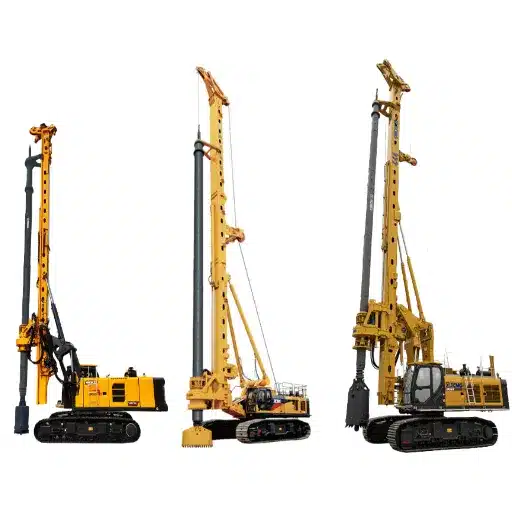
Modern rotary rigs employ state-of-the-art technologies to ensure maximum efficiency, safety, and environmental performance. It includes the following features:
- Automated Drilling Systems: Limiting human intervention. In so doing, they provide better accuracy and minimize human errors.
- Top Drive: A System that improves rotational control over the drill string, thus increasing drilling speed whilst limiting downtime.
- Advanced BOP Systems: With large capacity preventers and real-time monitoring of well control events for timely intervention.
- Real-Time Data Monitoring: Instrumentation and software for continuous analysis of drilling performance parameters to assure performance and safety.
- Greater Mobility: These are modular designs, coupled with hydraulic capabilities for fast rig-up, rig-down, and relocation.
- Environmental Control Measures: Systems aimed at controlling emissions, waste management, and spill containment, with the systems conforming to rigid environmental regulations.
This means that, collectively and individually, all these features allow modern rotary rig platforms to operate more efficiently while not compromising on safety and environmental standards.
Technological Advancements in Rotary Drilling
Modern rotary drilling has undergone further technological evolution in the pursuit of greater efficiencies, safety, and environmental considerations. Among the major inventions has been the automated drilling system with advanced sensors and real-time data analytics for optimization of drilling parameters, improvements in downtime, and avoidance of human errors. These systems also incorporate features allowing top drive mechanisms to substitute old rotary tables provided on many rigs, on which lower torque, and hence less precision and operational reliability, was inherent.
Another vital advancement has been the application of Managed Pressure Drilling (MPD), whereby the optimal wellbore pressure is kept under real-time conditions, thus minimizing the risks of kicks and losses. Moreover, the increasing availability of directional drilling technology with advanced telemetry and 3D mapping allows for very precise placement of wellbores, significantly enhancing access to complex reservoirs.
Such innovations go hand in hand with developments in the digital domain, such as AI-based diagnostics and predictive maintenance tools, that boost rig performance and reduce drilling costs. Together, the safety advantages and environmental benefits of these technologies serve as a driving force behind the industry’s transition to sustainable drilling.
Automation and Control Systems
With automation and control systems, the drilling industry has seen a great improvement in operational efficiency and safety. These systems and processes involve sensors, real-time monitoring, and a programmable logic controller (PLC) to automate key processes that include mud circulation, drill pipe handling, and well pressure management. Modern automation implements solutions such as remote-control rigs and autonomous drilling units, providing for the reduction of human intervention in hazardous environments. Implementation of machine learning and data analytics further backs decision-making by preempting operational inefficiency and impending equipment failure. Being an integration of various entities on a drilling rig, automation thereby reduces downtime, optimizes resource utilization, and safeguards environment-friendly extraction.
Safety Features in Rotary Drill Rigs
Rotary rigs are equipped with numerous advanced safety features with the notion that the safe conduct of operations further reduces any danger to personnel. One such feature is the automated pipe handling system that minimizes manual intervention and the potential for injury at the worksite. Pressure control systems, comprising BOPs, are meant to contain unforeseen pressure surges the prevent hazardous scenarios such as blowouts. An anti-collision system is implemented through sensors and software to prevent equipment damage and to maintain a defined safe distance between moving components. Through a real-time monitoring system, continuous feedback on the equipment status is given so that operators can detect any anomaly and take appropriate action. ESDs stop all operations in the occurrence of extreme situations, but the shutdown operation protects the crew and environment. These safety systems working together elevate the reliability and safety of rotary drilling operations.
Processes Involved in Rotary Drilling
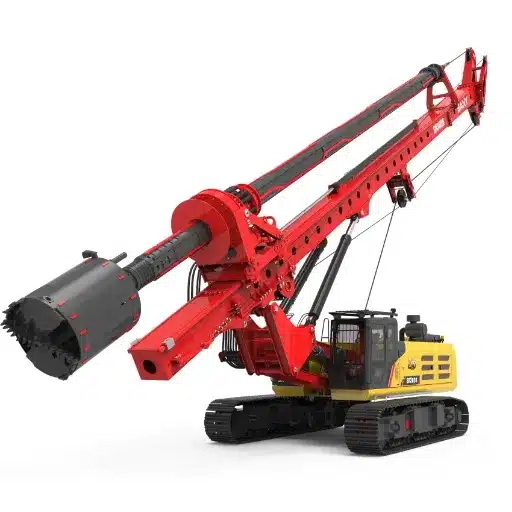
Rotary drilling is a broad term that refers to many different operations and activities undertaken to penetrate subsurface formations efficiently. The operation usually commences with rig setup, ensuring the drilling equipment is correctly positioned and anchored. Then, the drill is rotated while being pressed into the formation from above via the drill string by a mixture of weight-on-bit (WOB) and rotational torque transmitted from the top drive or rotary table.
Drilling fluid or mud is being circulated down through the drill string and up the annulus to cool the bit, stabilize the wellbore, and carry away the cuttings. Maintaining the downhole pressure helps in preventing the influx of formation fluids. Casing and cementing are occasionally carried out to strengthen the wellbore and isolate particular zones for structural integrity. Finally, logging and testing are done continuously or at intervals to obtain relevant data on subsurface conditions, thus improving decision-making during drilling. Each stage is managed with great care and attention to detail to ensure efficiency and safety.
Drilling Fluid Circulation Process
The drilling fluid circulation process, also known as the mud circulating system, is a vital operation in wellbore construction to bring cuttings to the surface, stabilize the wellbore, control formation pressures, and maintain thermal balance between the formations and the drilling fluid. This process operates continuously, starting by using high-pressure pumps to force drilling fluid, commonly referred to as “mud,” from surface equipment down through the drill pipe. The fluid exits the drill bit through jets, helping to break up rock formations.
Certain parameters affect this carrying effect, among them being mud weight, viscosity, and flow rate, which are all controlled to ensure maximum carrying efficiency. The efficiency of mud circulation depends to some extent on the nature of the drilling fluids being circulated. Gel strength and yield point should be in equilibrium such that they can suspend solids when the fluid is inactive, in circumstances like at a connection. Research has shown that an optimally designed mud system solves many problems regarding stuck pipes, consequently reducing drill time losses due to non-productive time (NPT), and hence improving drilling efficiency. The next level of optimization is being realized through real-time monitoring systems, enabling operators to instantly evaluate ECD (Equivalent Circulating Density) and CCI (Cuttings Carrying Index) parameters to dynamically optimize the fluid system throughout the operations.
Modern-day drilling technology improves wellbore cleaning, rate of penetration (ROP), and operational safety by continuously updating drilling fluid formulation and integrating relevant technologies.
Wellbore Stability Techniques
The technique of wellbore stabilization is a key consideration in maintaining the structural integrity of the borehole while avoiding common problems such a borehole collapse, stuck pipe, or lost circulation. These include high-technology modeling, material science, and real-time monitoring systems.
Drilling Fluid Optimization
The properties of drilling fluid are key to wellbore stabilization. Adjusting mud weight to counter the pore pressure phenomenon of the formation should ensure an optimal pressure balance. Currently, it is said that slightly higher than the pore pressure for mud weight, and less than the fracture pressure, renders the least chance of instability. Also, nanotechnology in drilling mud can prevent fluid invasion into the wellbore and maintain shale stability.
Geomechanical Modelling
Formation stress is a prerequisite for predicting wellbore failure and preventing its occurrence. Advanced geomechanical models integrate in-situ stress analysis, pore pressure data, and rock mechanical properties to simulate the stress distribution around the wellbore. For instance, 3D mechanical earth models (3D MEMS) have shown higher efficiency in predicting failure zones, allowing for the correction of well trajectory and drilling parameters beforehand.
Casing Design and Placement
The casing design, if done properly, can maximize the wellbore’s successfully mitigate weak or fractured formations. From the analysis of wellbore stress zones, it can be determined the depth at which the casing should be set to isolate problem layers. Dual casing techniques have especially proved effective in depleted zones or regions with high differentials in pressure.
Real-Time Monitoring Systems
Real-time monitoring of wellbore technologies instantly informs of any sign of instability. For example, increased annular pressure readings could be indicative of wellbore collapse. Integration of such systems with machine learning algorithms can augment predictability and decrease response time in addressing any issue.
Use of Borehole Strengthening Materials
Commonly adopted wellbore stabilization measures are managed pressure drilling (MPD) and the application of strengthening materials across the wellbore wall, such as resilient graphite or calcium carbonate. Such materials seal microfractures and hence reduce fluid pressure transmission into the formation, thus addressing induced failures.
Emerging research highlights how combining technologies, such as real-time geomechanical feedback with adaptive mud systems, foregrounds dramatic improvement in operational results. The deployment of such advanced wellbore stability methods can drastically reduce NPT (nonproductive time) during drilling operations and thus improve efficiency and cost-effectiveness.
Data Acquisition and Monitoring Systems
In modern drilling operations, data acquisition and monitoring systems form an integral part, enabling real-time data collection, analysis, and decision-making toward operations enhancement. Such systems usually consist of state-of-the-art sensors, telemetry units, and analytical software for measurements of pressure, temperature, torque, or vibration critical to operations integrity and safety.
The best data acquisition systems are laced with machine learning and predictive analytics that provide recommendations to prevent failures and anomalies. With the cloud architectures in place, data smoothly flows in for centralized storage and thus lends itself to remote monitoring and team collaboration. Mentioning edge computing, the technology is also utilized to locally process data, hence keeping the latency low, and time-critical decisions are made without any delay. The implementation of sound data monitoring systems reduces downtime and offers more accurate decisions, leading to safer and more efficient drilling operations.
Future of Rotary Rigs
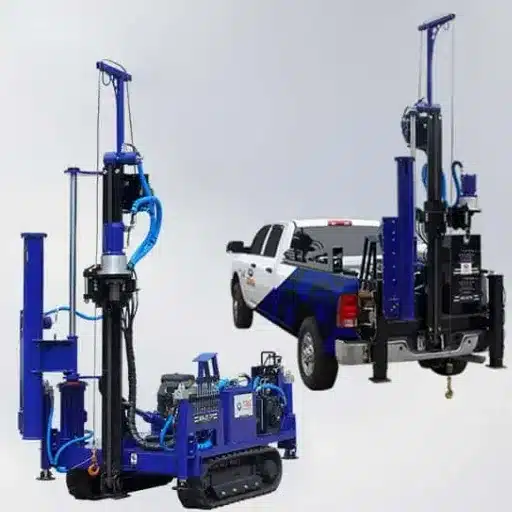
The future rotary rig is poised to be shaped by automation, data analytics, and environmentally friendly programs. Automation processes will continue to improve on-rig efficiency, thereby lowering the human error factor and creating an opportunity to change operations in real-time in the face of confrontation. Machine learning and advanced sensor technologies will feed the data into decision structures, optimizing safety and resource utilization. Besides, the drive to utilize greener energy sources and minimize environmental footprints will endeavor to make rotary rigs the premier choice in sustainable energy production. Hence, with its forefront technology and environmental consciousness, rotary rig development makes certain that its relevance and efficiency will remain steadfast in a landscape of rapidly transforming energies.
Trends in Rotary Drilling Technology
There are several key aspects in which the rotary drilling field is experiencing trends caused by the twin forces of technological innovation and the contemporary need for operational efficiency. Automation and digitalization provide one trend, wherein real-time analytics and machine learning are harnessed to keep an eye on drilling parameters, catch anomalies in the drilling process, and optimize the process itself-under downtime minimization, accuracy improvement, and cost reduction.
Another big advancement comes from the drill bits, with materials capable of being more durable and providing more performance in harsh geological settings. There are greater uses now for PDC bits as they offer faster penetration rates and extreme wear resistance.
Besides this, environmentally conscious approaches are becoming a major consideration. Managed Pressure Drilling (MPD) is one such system that seeks to reduce waste and minimize environmental impact by holding wellbore pressures within exact limits. A further answer to their attractiveness in the long run will come from this restructuring to renewable energy, which implies that rotary rigs will have to be adapted for use in geothermal energy exploitation.
The trends thus speak louder: a commitment by the whole industry to innovation, sustainability, and resilience to meet current and future energy demands.
Sustainability Practices in Rig Operations
The implementation of sustainability practices in rig operations is primarily focused on energy-efficient technologies and optimizing fuel use to reduce emissions. From a waste management perspective, emphasis is placed on the reuse and recycling of drilling fluids to lessen environmental impact. Other concerns include spills from poorly maintained equipment and operational efficiency. These, along with renewable energy integration whenever feasible, are the core principles linking my efforts with the industrial development goals for sustainability.
The Future of Drill Rig Systems
Drill rig systems are therefore an evolving field nurturing automation, data-based insight, and sustainable technologies. The operations have been set to be revolutionized by automation, with robotics and autonomous systems being introduced to elevate the level of precision while reducing human interventions. Analytic capabilities will optimize performance with real-time monitoring, while predictive maintenance will eliminate equipment failures, thereby reducing downtime and extending equipment life. On a separate front, renewable energy sources like solar and wind, coupled with energy-efficient systems, will greatly diminish the carbon footprint of drilling operations. Further developments in materials and design will improve the durability and operational performance of drill rigs while satisfying global concerns for sustainability and resource conservation. Together, these technological advancements shall ensure that the industry evolves to meet heightened energy needs within acceptable environmental norms and operational standards.
Reference Sources
Frequently Asked Questions (FAQs)
What is considered to be a rotary drilling rig, and how does it function?
The rotary drilling rig is generally considered to be a piece of drilling equipment mainly used in construction or mining tasks. A rotary table, a mechanical device to turn the drill, is the basis of its working principle. This allows the drill string to be driven to the ground efficiently to carry out laying for other applications. The components of the rig perform in associated operations; hence, the rig can perform any task dependent upon drilling.
What are the chief characteristics of a rotary rig?
The main features of a rotary rig are its height, which permits it to drill deep, and its undercarriage, which enables it to move over different terrains. The rig has an engine powerful enough to rotate the rotary table and run the drilling system. Modern rotary rigs continue to top off their capabilities with the use of top drive technology for faster and faster drilling.
Who are the most famous manufacturers of rotary rigs?
Some manufacturers dominate the market for rotary rigs. Caterpillar, Liebherr, and Atlas Copco are some of the companies that made a strong name for themselves with quality rotary drilling rigs. These manufacturers strive for innovation, reliability, serve the construction equipment industry, and ensure that their rigs can undertake demanding tasks.
What is the importance of the drill string in a rotary drilling rig?
Being a rotary drilling rig, the drill string transmits the rotational force to the drill bit. It consists of a series of pipes that are connected to allow a drilling fluid to flow downwards towards the bit. The drilling fluid is often water that cools the bit and lifts the cuttings to the surface, thereby contributing to the effective drilling operation.
How does a rotary drill rig execute piling operations?
For piling operations, rotary rigs can be adapted to drill deep holes for foundations. The deep cutting drilling allows the rig to penetrate various soil types while remaining stable. By reliable control of the force applied to the drill string, the rig can install piles for road construction equipment and other structures.
What makes rotary rigs fit for surface drilling?
The rotary rigs, being able to generate huge quantities of rotational force on the drill, are best suited for surface drilling. Thus, rotary rigs are utilized for top drill tough, hard-ground surface and large diameter holes. Furthermore, because of their mobile nature, they can be easily transported from one job site to another and are hence preferred in construction and mining activities.
What does the slip do in a rotary rig?
The slip is an important part of a rotary rig that supports the drill string when the rig is not in operation. It holds the weight of the drill string and prevents it from falling when the rig is being adjusted or the drill bit is changed. This feature is very important in ensuring the efficiency and reliability of the rig during drilling operations.
How does the surface drilling rig compare to a cutting drilling rig?
Surface drilling rigs and cutting drilling rigs perform different tasks in the drilling industry. Surface drilling rigs are usually employed for shallow drilling activities, whereas cutting drilling rigs are for deeper and more demanding drilling operations. Both types of rigs are indispensable for construction and mining schemes; however, depending on the drilling specifications, each offers its own advantages.
- Do Gas Stations Make Money on Gas?
- Explosion-Proof LED Lighting: Ensuring Safety in Hazardous Areas
- Ambler’s Texaco Gas Station: A Historic Stop Along Route 66
- Understanding the Parts of a Fuel Pump in Your Fuel System
- Transfer Pump: Understanding Fuel and Water Transfer Solutions
- RFID Fuel Management System: Enhancing Fleet Efficiency with RFID Technology
- Do Gas Stations Make a Lot of Money? Understanding Gas Station Revenue and Profitability
- Gas Station Construction: Building a Gas Station with Construction Costs in Mind


